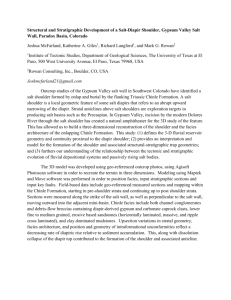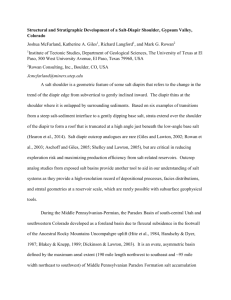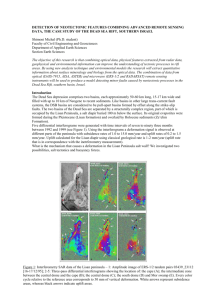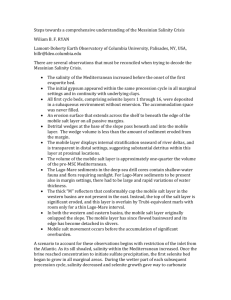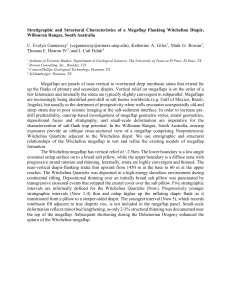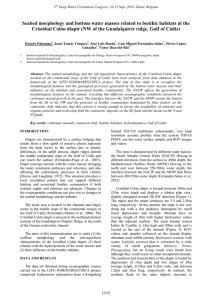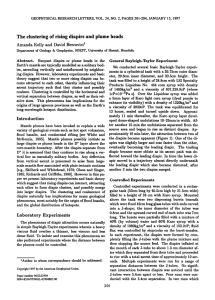GCAGS Abstract-Salt tectonic controls on facies and sequence
advertisement
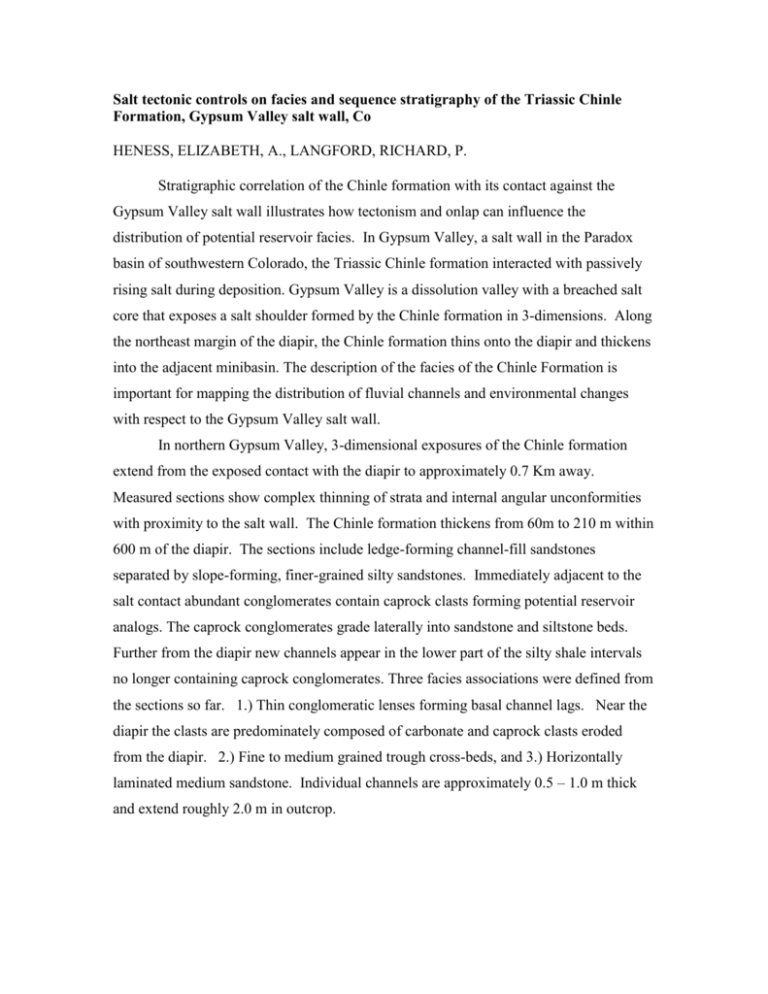
Salt tectonic controls on facies and sequence stratigraphy of the Triassic Chinle Formation, Gypsum Valley salt wall, Co HENESS, ELIZABETH, A., LANGFORD, RICHARD, P. Stratigraphic correlation of the Chinle formation with its contact against the Gypsum Valley salt wall illustrates how tectonism and onlap can influence the distribution of potential reservoir facies. In Gypsum Valley, a salt wall in the Paradox basin of southwestern Colorado, the Triassic Chinle formation interacted with passively rising salt during deposition. Gypsum Valley is a dissolution valley with a breached salt core that exposes a salt shoulder formed by the Chinle formation in 3-dimensions. Along the northeast margin of the diapir, the Chinle formation thins onto the diapir and thickens into the adjacent minibasin. The description of the facies of the Chinle Formation is important for mapping the distribution of fluvial channels and environmental changes with respect to the Gypsum Valley salt wall. In northern Gypsum Valley, 3-dimensional exposures of the Chinle formation extend from the exposed contact with the diapir to approximately 0.7 Km away. Measured sections show complex thinning of strata and internal angular unconformities with proximity to the salt wall. The Chinle formation thickens from 60m to 210 m within 600 m of the diapir. The sections include ledge-forming channel-fill sandstones separated by slope-forming, finer-grained silty sandstones. Immediately adjacent to the salt contact abundant conglomerates contain caprock clasts forming potential reservoir analogs. The caprock conglomerates grade laterally into sandstone and siltstone beds. Further from the diapir new channels appear in the lower part of the silty shale intervals no longer containing caprock conglomerates. Three facies associations were defined from the sections so far. 1.) Thin conglomeratic lenses forming basal channel lags. Near the diapir the clasts are predominately composed of carbonate and caprock clasts eroded from the diapir. 2.) Fine to medium grained trough cross-beds, and 3.) Horizontally laminated medium sandstone. Individual channels are approximately 0.5 – 1.0 m thick and extend roughly 2.0 m in outcrop.
